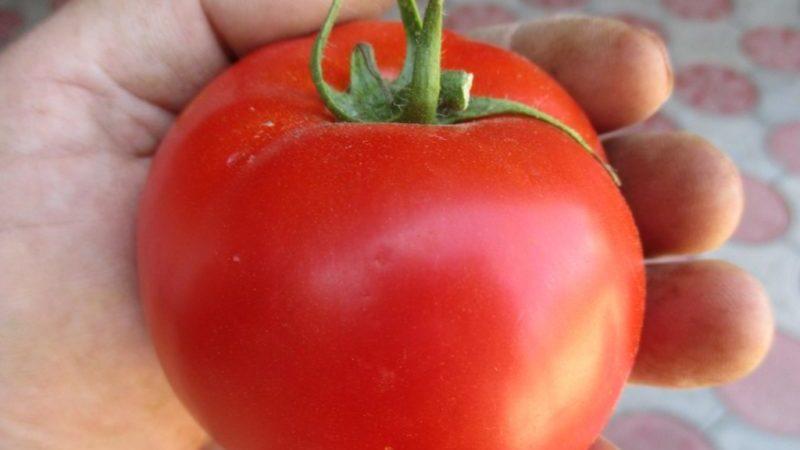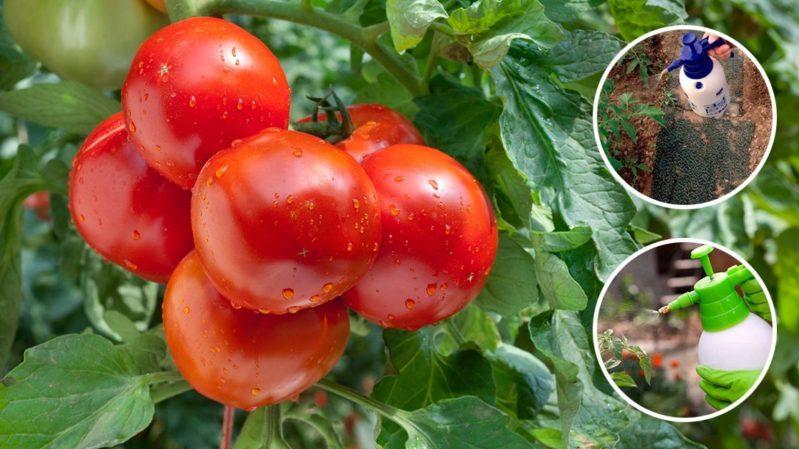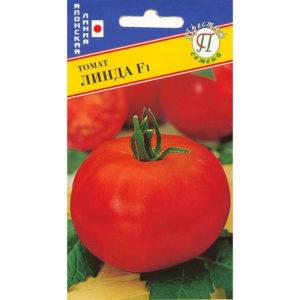Detailed description of tomatoes Linda F1 - features of fruits and seeds
Thinking about which variety of tomatoes to grow in your garden? You can't go wrong with the Linda F1 hybrid. These red, juicy, fleshy tomatoes won't leave you indifferent.
Linda F1 has an undeniable advantage over other species, as it is extremely productive, disease-resistant, tenacious and does not crack, which makes it popular and in demand.
The content of the article
Characteristics of the tomato variety Linda F1
Tomato cultivar Linda F1 was bred by Japanese breeders in 2009. It is a hybrid. When buying seeds pay attention to the name, as there is another type of tomato called Lindacreated by Russian scientists. This is a type of cherry tomato that is grown on the balcony.
Both varieties have earned a good reputation for their early maturity and yield. Now let's talk in more detail about the Linda F1 tomato variety.

Features of hybrid fruits
Tomatoes Linda F1 represent medium fruits, from 80 to 150 g, the mass of some reaches 300 g. The color is juicy red. The variety is suitable for fresh use and in homemade preparations for long-term storage, including in whole form.
The shape of the fruit is slightly flattened, rounded, the skin is dense. The taste is rich, but unobtrusive, pleasant, slightly sour. The appearance of the tomatoes is attractive and "tasty"so for growers preparing crops for sale this will be a significant advantage.
Pros and cons
Linda F1 tomatoes quickly gained popularity among gardeners. This is one of the most common tomato varieties grown on our plots. Why do experienced gardeners choose this species?
Indisputable advantages of the variety:
- Large fruits, approximately the same in weight and general appearance.
- Linda F1 tomato is not whimsical.

- Withstands temperature fluctuations.
- Easily tolerates heat.
- The dense skin protects against cracking.
- It has immunity to diseases such as verticillary (fungal infection, when the leaves turn yellow from below, subsequently dry out and fall off) and fusarium (dark spots appear on the leaves, followed by drying and loss of leaves) wilting. Also, the plant does not affect the alternariosis of the stems (lesion of brown stems in the form of rings) and gray leaf spot (small specks on the leaves of black-brown color).
- High yield - about 2 kg of fruits are obtained from each bush.
- Minimal care.
- Linda harvests several times in 100 days. You will taste the first fruits in the middle of June, and at the end of September you will collect the last ones.
- High yields are harvested with a long daylight hours and high temperatures of 22-25 ° C.
Among the disadvantages of tomato Linda F1 according to reviews of amateur gardeners are:
- high cost of Linda F1 seeds;
- some summer residents noted a slight plastic taste, but this is rather a subjective assessment.
The advantages of tomatoes in terms of characteristics largely outweigh the disadvantages.
Growing features
The ideal growing area is open ground. Tomatoes will also be comfortable in greenhouses, and the bushes will give a good harvest. Gardeners usually plant 4 seedling bushes per 1 m². Young seedlings are planted after the end of the frost. In warm regions, seeds are immediately sown into the ground, without pre-growing seedlings.
Seed preparation
Seed preparation of this variety is similar to other types of tomatoes: exclude defective, empty and moldy seeds.
To improve growth, professionals recommend treating seeds with growth stimulants and, to increase resistance to infections, disinfect with a solution of potassium permanganate in a ratio of 1 g per 1 liter of water. In the solution, the seeds are kept for 20-30 minutes, after which they are washed with running water and placed in growth stimulants for 12 hours.
Planting seeds and care
The next step after preparation is to plant the seeds in seedling cups or boxes. The ideal soil is a mixture of turf, peat, black soil and a small amount of sand. Gravel is poured at the bottom of the cups or boxes, which serves as drainage. Expanded clay is also suitable here.
2 or 3 seeds are planted in cups, and one seed per 7 cm² in boxes. The plantings are covered with polyethylene and placed in a room with a temperature of at least 25 ° C. Watered with a moderate drip method. Light is provided up to 12 hours a day. If daylight is not enough, use lamps.
When the seeds sprout, the plastic wrap is removed and the temperature is lowered to 20 ° C.
After the formation of 2-3 leaves, a pick is made. When the seedlings grow to 10-15 cm, they are planted in the ground.
How to care for a tomato after planting - general recommendations
Caring for tomatoes is easy. The main thing:
- Regularly to water after the Sunset.
- Do not fill. Excessive moisture will lead to the death of the bush. Watering 1-2 times every two weeks is enough until the fruit appears.
- Feed the soil... You can plant between the rows of plants that improve the composition of the soil - peas, clover, mustard.
- Weed and huddle the soil after planting.
- Tie bushes... Although many gardeners say the stems are strong enough and behave well without tying up, professionals argue that this is necessary so that the plants do not break under the weight of the ripe crop.
- Protect from insect pests.
- Conduct disease prevention: spray solution of wood ash or nettle tincture.
Popular fertilizers

Despite the unpretentiousness of the variety, you need to feed the soil 5 times per season with organic and mineral fertilizers:
- Before planting seedlings, gardeners fertilize the land with manure and compost.
- 3 weeks after planting the seedlings, phosphorus, potassium and nitrogen or a solution of poultry manure are added to the soil.
- When the ovary is formed, the soil is fertilized with a ready-made mineral fertilizer: "Ideal", "Nitrofoska", "Agricol-Vegeta". Potassium chloride and sodium humate are also used.
- In the next complementary food, when flowers are formed on the third brush, mineral fertilizers are also used, including potassium sulfate, superphosphate.
- The gardeners carry out the last feeding 14 days after the previous one, mainly using superphosphate.
Ripening time and yield
The first fruits are harvested around mid-June. If the seeds were planted in March, summer residents try their tomatoes after about 100 days. Linda F1 bears fruit until late autumn. It is noted that the more often the fruits are removed from the bush, the more it bears fruit.
The yield reaches 2 kg from one bush. Also, amateurs point out that all the fruits of this plant turn red quickly and at the same time, so some gardeners treat the bushes with a magnesium solution so that they do not turn red longer.
The best time to harvest is early in the morning. Ripe tomatoes are removed first. For long-term storage and for sale, it is recommended to remove brown tomatoes; they ripen on their own in a dark place.
Methods for obtaining seeds
According to experienced professionals, it is better not to use Linda f1 tomato seeds from last year's crop.... They acquire new seeds every season, just like with other hybrids. But if you still decide to try to get seeds at home, here is what experienced tomato growers advise to do:
- Choose the largest, undamaged, ripe fruits.If you choose brown or pink, in any case, wait for them to ripen, for example, on a windowsill. The first ripe fruits are best.

- Wash the tomatoes, carefully cut in half.
- Take out the seeds with a spoon and place them in jars sterilized with boiling water.
- Cover the jars with gauze, fix with an elastic band.
- At a temperature of 23-25 ° C, leave the seeds to ferment in their own juice for two days, no more, otherwise they will germinate.
- Take out and rinse the seeds through a gauze folded in several layers, removing mucus.
- Remove pop-up and blank.
- Allow the seeds to dry for up to 7 days at a temperature of 25C °, using glassware or a cloth. You cannot use paper!
- Rub the resulting seeds between your fingers and let them dry for up to 2 days at a temperature of 35 ° C, for example, in the attic.
- Place the received seeds in a paper envelope and sign.
Storage features
Ripe fruits are stored in a dry, cool, dark place for up to 25 days. For longer storage, tomatoes are removed unripe, green or brown. It is recommended to put them in wooden boxes, covering them with sawdust.
Conclusion
Tomato variety Linda F1 is unpretentious, productive, early ripening and convenient even for the busiest gardeners. It is suitable for fresh use, for making lecho, juices and other preparations. Resistant to disease. Has an attractive presentation for sale. It is grown in all regions of Russia, only the amount of the harvested crop depends on the climate. Suitable for both novice gardeners and experienced gardeners.